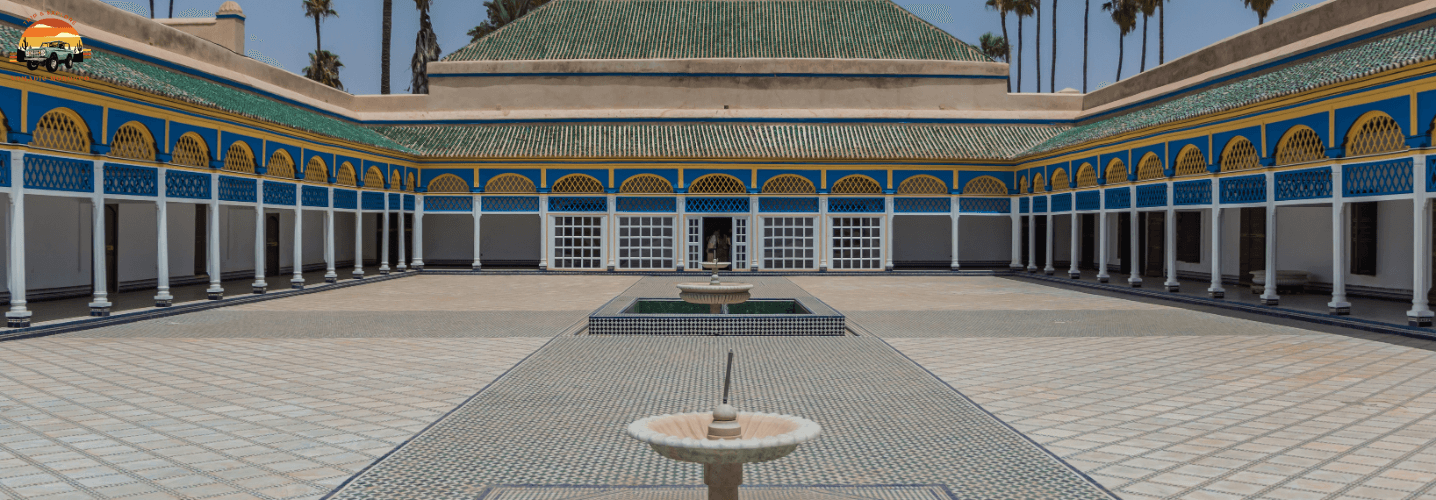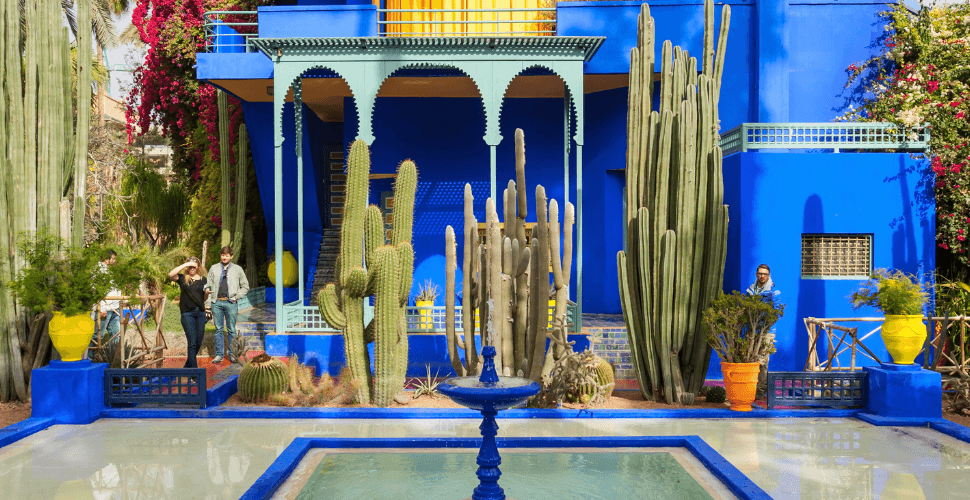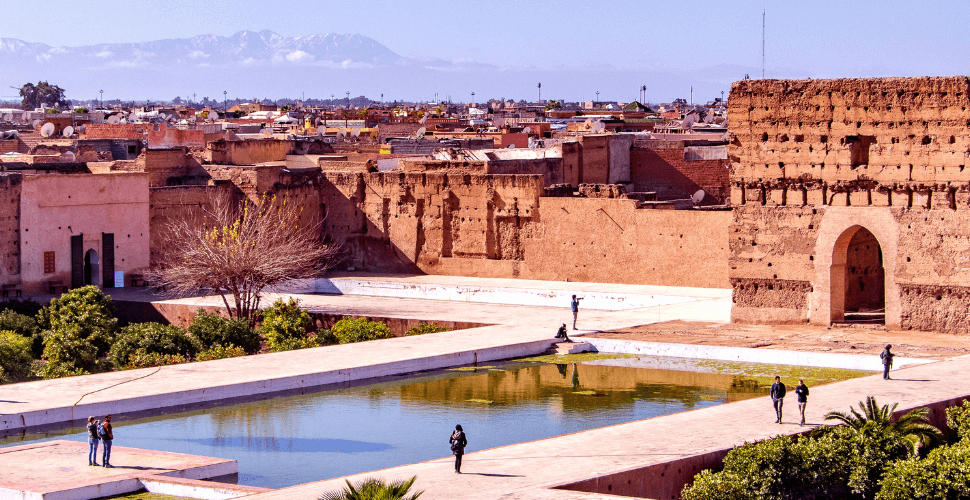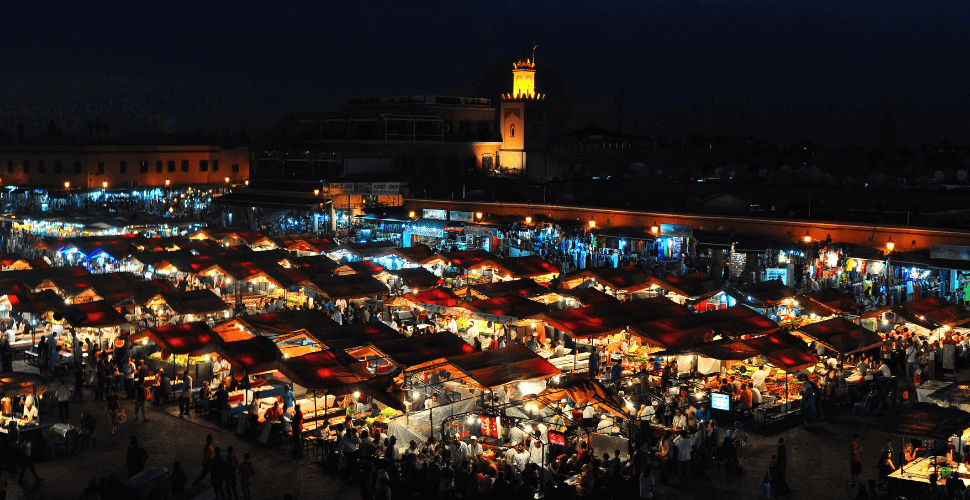Palais Bahia is a palace located in Marrakech, Morocco. It was built in the late 19th century by Si Moussa, a grand vizier of Sultan Hassan I. The palace was later expanded by his son, Bou Ahmed. Palais Bahia took around 14 years to complete and its name means “brilliance”.
The palace’s construction began in 1866 and it wasn’t until the early 1900s that it was finally completed. The building process involved many skilled artisans who worked tirelessly on intricate details throughout the whole structure of Palais Bahia. These included woodcarvers, plasterers, mosaicists and painters who all contributed to making this magnificent palace what it is today.
Throughout history, Palais Bahia has been home to some of Morocco’s most prominent figures including governors and foreign dignitaries visiting from other countries. Its architecture reflects Moroccan style with influences from Andalusian Spain as well as Islamic art which can be seen in its ornate archways and intricate tile work decorating the walls and floors throughout the palace complex.

The Architecture of Palais Bahia

The architecture of Palais Bahia is a blend of Islamic and Moroccan styles. Built in the late 19th century, it showcases intricate details and patterns that are characteristic of Moroccan design. The palace was constructed by Si Moussa, who served as the Grand Vizier to Sultan Hassan I.
One of the most striking features of Palais Bahia is its courtyard, which spans over two acres. It is surrounded by rooms with ornate ceilings and intricately carved wooden doors. The courtyard also boasts a large central fountain decorated with colorful tiles.
The palace’s interiors feature delicate stucco work on walls and ceilings, adorned with geometric patterns and Arabic calligraphy. Visitors can see beautifully crafted zellige tilework on floors, walls, fountains and columns throughout the palace’s various chambers. These elements come together to create an atmosphere that reflects Morocco’s rich cultural heritage through artistry in architectural design.
The Significance of Palais Bahia in Moroccan Culture
Palais Bahia is a significant landmark in Moroccan culture, as it represents the country’s rich history and architecture. The palace was built during the late 19th century for Si Moussa, a wealthy Moroccan nobleman who served as Grand Vizier to Sultan Hassan I. The name “Bahia” means “brilliance,” which accurately reflects the beauty and grandeur of this structure.
The palace was designed by renowned architect El Mekki, who incorporated traditional Moroccan elements into its construction. This includes intricate tile work, carved stucco plasterwork, and ornate wood carvings that are characteristic of Islamic art. These features make Palais Bahia an excellent example of Moroccan architectural style.
In addition to its stunning design, Palais Bahia holds cultural significance in Morocco due to its historical role as a meeting place for political leaders and dignitaries throughout the years. It has also been used as a filming location for several movies and TV shows set in Morocco. Overall, Palais Bahia stands out not only for its remarkable architecture but also for its cultural importance in preserving Morocco’s past.

The Intricate Details of Palais Bahia’s Interior Design

The interior design of Palais Bahia is a prime example of Moroccan craftsmanship and attention to detail. Every inch of the palace’s walls, ceilings, and floors are adorned with intricate patterns and designs that reflect the country’s rich cultural heritage.
One notable feature of the interior design is the use of zellige tiles, which are small pieces of colored tile arranged in geometric patterns. These tiles can be found throughout the palace, from the grand courtyards to smaller rooms and hallways. The colors used in these tiles range from vibrant blues and greens to earthy browns and reds.
Another striking aspect of Palais Bahia’s interior design is its use of carved woodwork. From door frames to ceiling panels, every surface seems to have been meticulously crafted with intricate carvings featuring floral motifs or geometric shapes. These details add depth and texture to each room while also serving as a testament to Moroccan woodworking traditions.
Overall, Palais Bahia’s interior design showcases Morocco’s rich artistic heritage through its skilled craftsmanship, vivid colors, and ornate details. Visitors who step inside this magnificent palace will undoubtedly be transported back in time while marveling at its beauty.
The Beautiful Gardens of Palais Bahia
The gardens of Palais Bahia are a sight to behold. Spread over an area of eight hectares, the gardens are a perfect blend of Islamic and Andalusian architecture. The garden is divided into four parts, each with its own unique features. One part has orange trees that provide shade in the summer months, while another has fountains that create a soothing sound.
The central courtyard is undoubtedly the highlight of the garden. It boasts lush greenery and beautiful flowers that bloom throughout the year. The courtyard also has several water features such as streams and fountains that add to its charm. Visitors can sit on one of the many benches around the courtyard and enjoy the serene atmosphere.
One cannot miss visiting ‘Le Jardin Secret’ when exploring Palais Bahia’s gardens. This secret garden was only recently opened to visitors after being closed for almost 400 years! The garden comprises two courtyards – one with exotic plants from all over Morocco, while the other houses traditional Moroccan herbs used in cooking and medicine. Visiting this hidden gem is truly an unforgettable experience for nature lovers!

Unleash the Adventure: Discover Our Excursions
Please note that every route listed on our website is simply a starting point. At our company, we believe in fully customizing every aspect of your trip to meet your specific timing, budget, and preferences. We offer complete flexibility to extend, adjust, shorten, add or even skip stops and towns within a reasonable frame.
Our team of experts will work with you to recommend the best routes and schedules that cater to your interests and create an efficient yet comfortable itinerary. Trust us to take care of all the details, so you can sit back, relax and enjoy your personalized travel experience.










